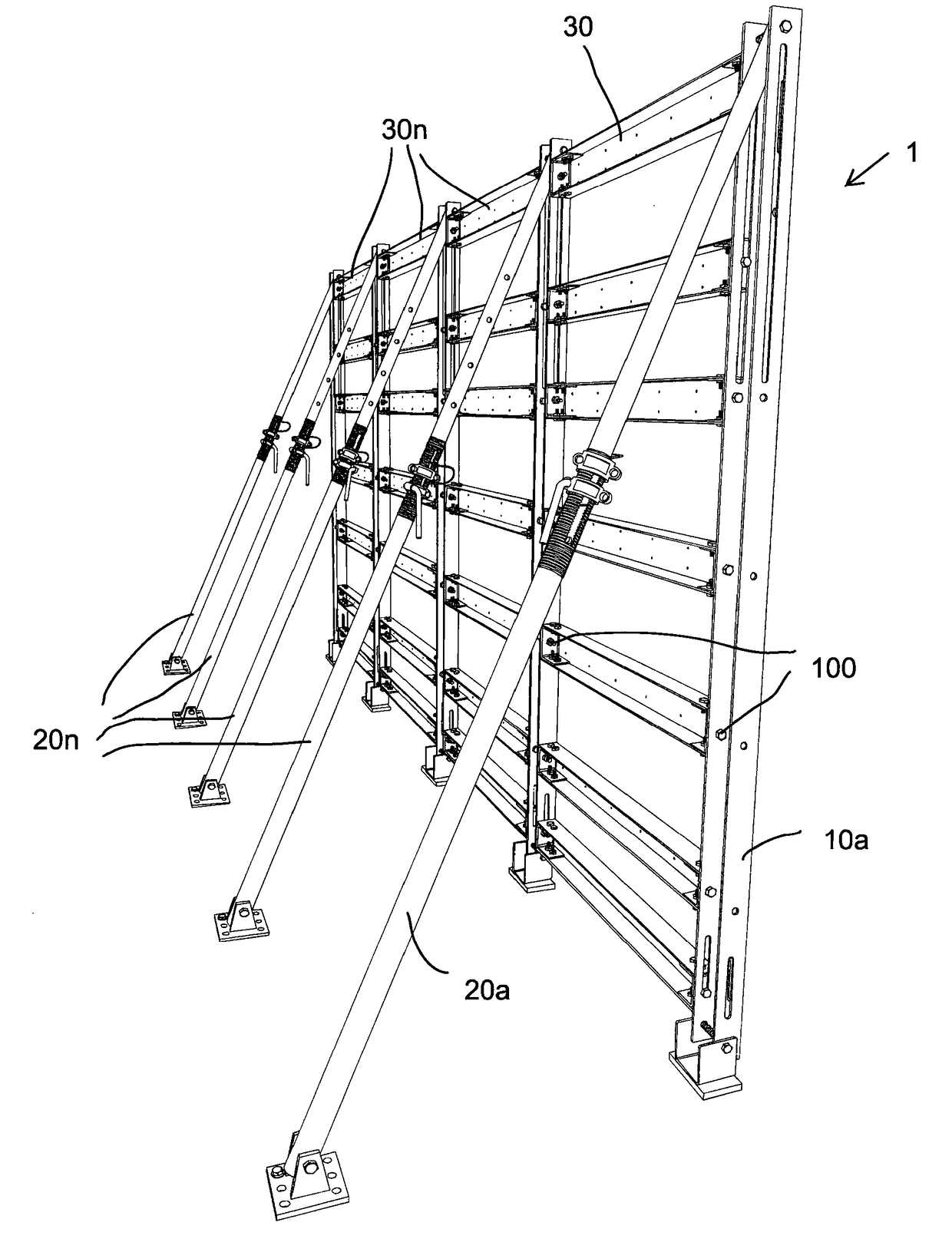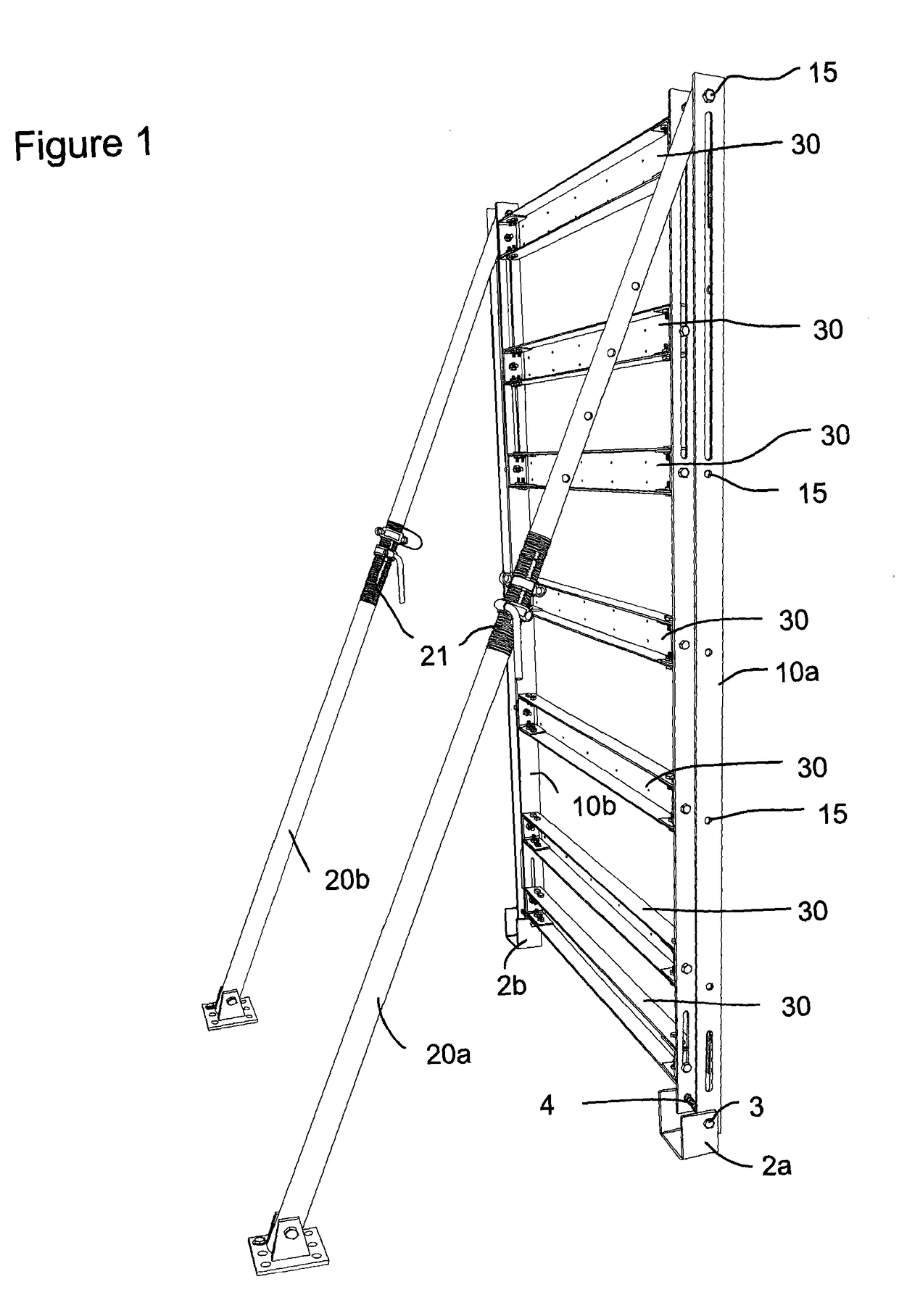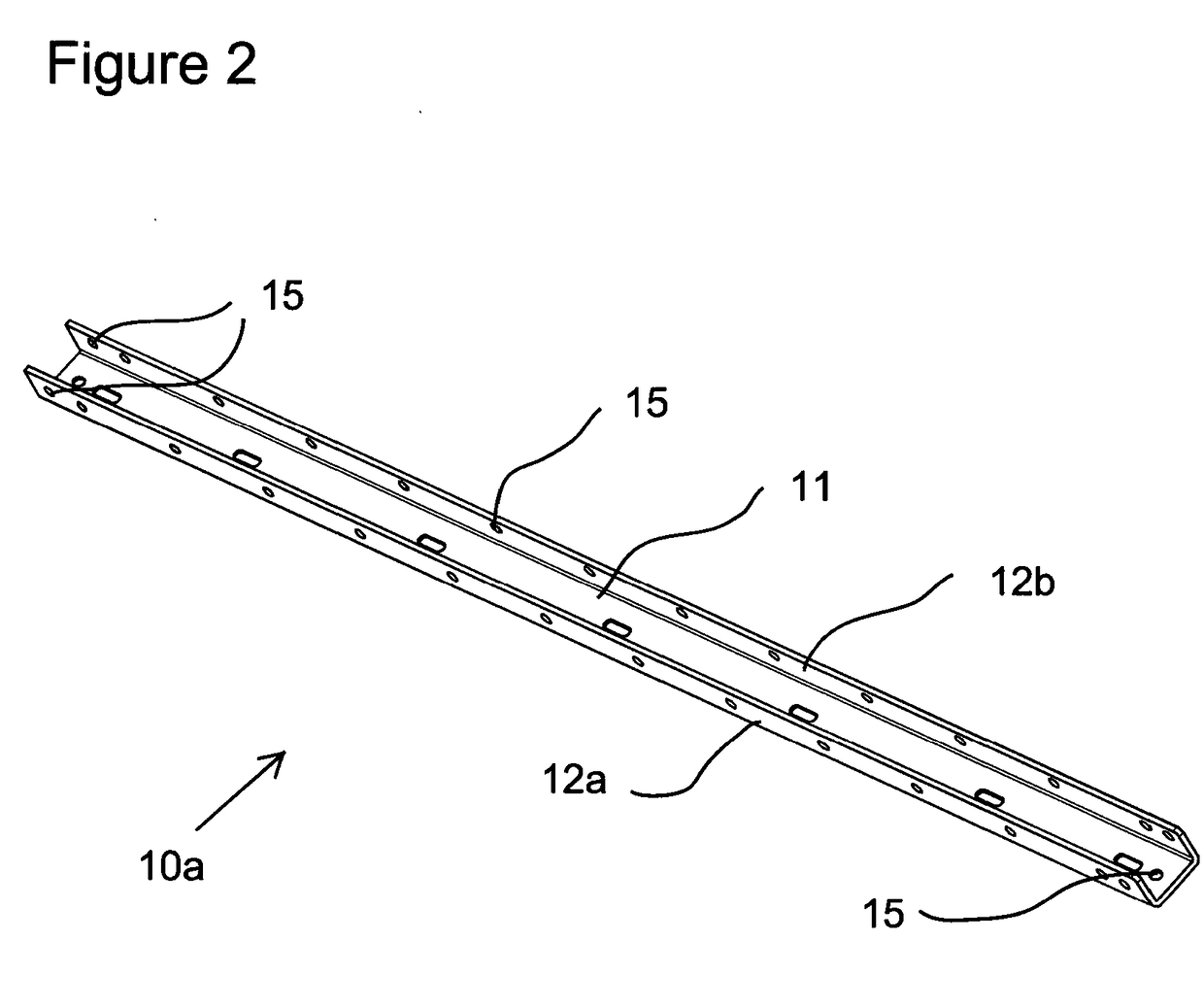Method for erecting a shuttering framework
a technology of shuttering framework and frame, which is applied in the direction of auxilary members of forms/shuttering/falseworks, shaping building parts, and forming structures. it can solve the problems of time-consuming and wasteful, complex erecting and heavy, and inability to readily reuse timber, etc., to achieve simple and robust attachment, prevent bowing, and time-consuming
- Summary
- Abstract
- Description
- Claims
- Application Information
AI Technical Summary
Benefits of technology
Problems solved by technology
Method used
Image
Examples
Embodiment Construction
[0038]In FIG. 1 there is shown a shuttering framework erected using an embodiment of the method according to the invention. The framework is generally designated 1. A method for erecting the framework 1 is described as follows.
[0039]Firstly, one end of a first support 10a is fixed to the ground and one end of a first brace 20a is fixed to the ground. In the example provided the first support has a pivotal anchoring bracket 2a fixed to one of its ends, and it is this bracket that fixes to the ground. The bracket 2a is a short length of channel section steel and has a base and two opposing sides. The sides have a hole 3 drilled in them to receive a bolt 4. The base also has a hole drilled in it. A rawl bolt (not shown) is introduced through this hole and is imbedded into the ground surface onto which the bracket 2a is placed. The bolt is tightened and this holds the bracket 2a and thus the first support 10a securely to the ground. In the example shown the first support 10a comprises a...
PUM
 Login to View More
Login to View More Abstract
Description
Claims
Application Information
 Login to View More
Login to View More - R&D
- Intellectual Property
- Life Sciences
- Materials
- Tech Scout
- Unparalleled Data Quality
- Higher Quality Content
- 60% Fewer Hallucinations
Browse by: Latest US Patents, China's latest patents, Technical Efficacy Thesaurus, Application Domain, Technology Topic, Popular Technical Reports.
© 2025 PatSnap. All rights reserved.Legal|Privacy policy|Modern Slavery Act Transparency Statement|Sitemap|About US| Contact US: help@patsnap.com



